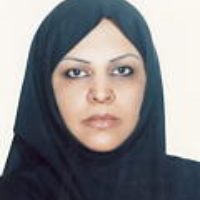Principles of Designing Urban Open Spaces in the Globalization Era (Case Study: Tehran Historical Center)
Author(s):
Abstract:
With globalization, the economies of most countries have become incorporated in a global capitalist economy through the advanced communication technologies and multi-national companies and institutions. This process causes some changes in the nature and form of built environment such as public spaces, etc. There for, the globalization leads to a kind of fear about creating similar landscapes around the world, commercialization of the built environment, transformation of the urban form, threatening the local landscapes and identities and ultimately damaging the built environment, as well as the natural one. So the attention to the local ideas will be necessary. Urban public open spaces and globalization have a Mutual interaction. On one hand globalization affects on forms and activities of public open spaces, and on other hand urban public spaces have a considerable influence on competitiveness and competitive picture of cities and are of great importance for the urban culture and city life. Thus urban open spaces have an important role in addressing with cities of globalization era. Because of that in this paper, the open spaces of the historical center of Tehran are considered. The key questions of this paper are as follows: 1-What are the impacts of globalization on public open spaces in Tehran? 2- How the urban public spaces can help non-global cities to have a stronger position in the global era? This paper shows that Tehran with a population of about 12 million is one of the important capitals in the Middle East and has a dominant role in national transactions but it has recognized as a non-global city. Different studies confirm this too. Short (2004), classifies Tehran in his "black holes" and describes it in the typology of non-world cities as a "resisting city". With the criteria of GAWC Research group, Tehran has minimal evidences of world city formation but it is not a global city. Also some studies show that Tehran has not started globalization process yet and as the process develops, this city stays more and more behind it. In accordance with this research, although Tehran is not a global city and even has not started the globalization process so far, but it needs to achieve the requirements of competitiveness in the era of globalization and enhancement its global image. According to the above mentioned approach, design principles of urban open spaces of the historical center of Tehran in the era of globalization, is identified and presented. These design principles are: 1- Improvement of Global Image of Tehran and Efficiency in Local Scale, 2- Access to information, 3- Efficiency in local scale, 4- Identical Continuity, 5- Legibility and Meaning, 6- Animation and Richness, 7- Safety and Security and 8- Ingravibility. Finally this paper presents a series of actions to follow in designing the public realm of non-global cities (like Tehran) in the context of globalization era.
Keywords:
Language:
Persian
Published:
Journal of Architecture and Urban Planning, Volume:3 Issue: 5, 2010
Page:
99
magiran.com/p1161683
دانلود و مطالعه متن این مقاله با یکی از روشهای زیر امکان پذیر است:
اشتراک شخصی
با عضویت و پرداخت آنلاین حق اشتراک یکساله به مبلغ 1,390,000ريال میتوانید 70 عنوان مطلب دانلود کنید!
اشتراک سازمانی
به کتابخانه دانشگاه یا محل کار خود پیشنهاد کنید تا اشتراک سازمانی این پایگاه را برای دسترسی نامحدود همه کاربران به متن مطالب تهیه نمایند!
توجه!
- حق عضویت دریافتی صرف حمایت از نشریات عضو و نگهداری، تکمیل و توسعه مگیران میشود.
- پرداخت حق اشتراک و دانلود مقالات اجازه بازنشر آن در سایر رسانههای چاپی و دیجیتال را به کاربر نمیدهد.
In order to view content subscription is required
Personal subscription
Subscribe magiran.com for 70 € euros via PayPal and download 70 articles during a year.
Organization subscription
Please contact us to subscribe your university or library for unlimited access!



